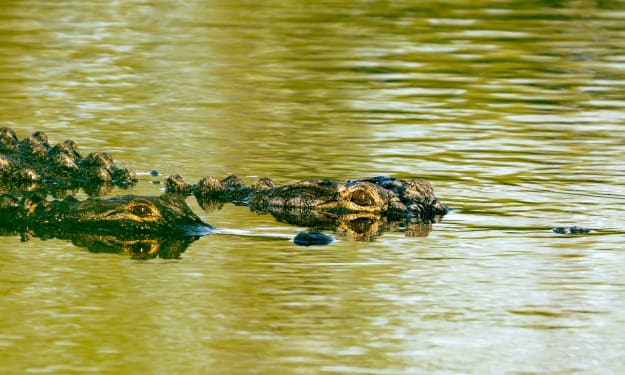Is the Black Holes on Earth?
Black Holes mystery

Let me take you to a place that feels like it's from another world. Inside this cave, life has been isolated from the outside for approximately 5.5 million years, and the evidence is remarkable. Due to this long isolation, the conditions within the cave are unlike anywhere else on Earth. Despite the severe lack of sunlight and the toxic air, a unique ecosystem thrives. Located a few miles west of the Black Sea in Romania, this cave was first discovered in 1986. However, access to the cave is restricted, requiring special permission. Additionally, the central caverns are naturally guarded by narrow limestone tunnels and vertical shafts. If you are claustrophobic, it's best to steer clear of this place.
The cave's depth causes the air inside to contain twice as little oxygen as the air outside. Instead, it is filled with carbon dioxide and hydrogen sulfide, making it far from fresh. The cave is pitch black, but despite—or perhaps because of—these extremely harsh conditions, the site is a treasure trove for biologists. In a 1996 study, scientists identified 48 species, 33 of which were unique to the cave. Most of the cave's inhabitants are tiny creatures with long limbs and antennae that help them navigate in the darkness. They lack vision and pigmentation, which makes sense considering they live in total darkness without anyone to see them.
Now, let's explore another remarkable cave that looks vastly different. Welcome to the Giant Crystal Cave, also known as the Cave of the Crystals in Mexico. These colossal crystals were discovered in 2000 by a mining company when they pumped out the water from the cave. Two miners stumbled upon the crystals as they entered the drying cave on foot. These awe-inspiring crystals are massive gypsum pillars hidden 984 feet underground. They are anchored to the walls and floor of the scorching hot cave. Scientists estimate that the crystals have been growing for half a million years, explaining their remarkable size. Unfortunately, visiting this natural wonder is currently impossible, and perhaps that's for the better. The Giant Crystal Cave is a dangerous place that can quickly become treacherous. For tens of thousands of years, it was filled with groundwater that was pushed upward into the opening by a magma chamber deep within the Earth. The magma kept the water hot, but as the temperature dropped below 136 degrees Fahrenheit, the water became filled with calcium and sulfate particles, which eventually combined into gypsum crystals. These white-tinted crystals gradually took over the cave as they continued to grow underwater.
You don't have to travel to space to encounter something similar to black holes. Scientists have discovered comparable phenomena in the southern Atlantic Ocean. Ocean black holes exhibit enormous gravitational pulls, trapping anything that enters with little chance of escape. These massive whirlpools, known as ocean eddies, spin against the main current, swirling billions of tons of water. Most of them are larger than a city. These whirlpools are so powerful that you may not even realize you're heading into one until it's too late. They are surrounded by impenetrable barriers where fluid moves in closed loops, trapping everything inside. These ocean eddies function as enormous containers, isolating the water within, which can have different properties compared to the surrounding ocean. Salt content and temperature often differ inside and outside these eddies.
Now let's move on to the Dancing Forest located on the Curonian Spit in the Baltic Sea. This area has captivated locals due to its unusually shaped pine trees. The trees twist in spirals and circles along the ground, earning the forest its name. There are several theories as to why this phenomenon occurs. Some suggest that intense clashes between positive and negative energies took place in the area, while others propose that the sandy soil is too unstable to support upright tree growth. Another popular theory attributes the unique shapes to the strong winds blowing from the water. Despite ongoing research, experts have yet to reach a final conclusion.
Next, let's dive into the underwater crop circles discovered close to Southern Japan's coast in 1995. These seven-feet-wide structures were initially mysterious, earning them the name "mystery circles." The enigma puzzled many until researchers finally identified the culprit—a male pufferfish. The fish spends a little over a week building each circle, giving careful attention to aesthetics. The male swims inside the circle, using its fins to create valleys in the sand. It also decorates specific parts of the circle with shells and corals. The purpose of this construction is to create a nest. As the male fish swims, it pushes the sand toward the center, forming a mound that serves as the nest.
Now, let's explore the Great Blue Hole off the coast of Belize in the Caribbean. This giant sinkhole, approximately 1,000 feet across and over 400 feet deep, was once a cave. Rising waters eventually filled it, causing it to collapse inward. As you descend into the sinkhole's crystalline waters, it becomes increasingly dark. Stalactite-filled caves are abundant, but entering them is extremely dangerous. Once you reach a depth of 50 feet, you'll notice the shimmering water—this marks the invisible line that separates the sinkhole's salty top from the freshwater abyss. It is wise to turn back at this point, as who knows what you might encounter in the murky depths.
In the Peruvian Amazon, there is a river that was believed to be the product of a legend—an incredibly hot river that boils. Geoscientist Andres Ruzo questioned whether this river could be real, despite experts dismissing it as mere folklore. In 2011, Ruzo located the river from the legend, and the water was indeed steaming hot, with a temperature reaching 186 degrees Fahrenheit. While not boiling, it comes close. What surprised the researcher the most was the river's size. Unlike typical hot springs, which are small, this river is 20 feet deep and flows for almost four miles. It is the only river of its kind on Earth.
These captivating natural wonders remind us of the incredible diversity and mysteries our planet holds. From isolated cave ecosystems to giant crystals, underwater phenomena, unique forests, and peculiar rivers, Earth never fails to amaze us.
About the Creator
Ervīns Stūrītis
My mission is to educate my dear readers with true, interesting and helpful information to make their daily lives easier.






Comments
There are no comments for this story
Be the first to respond and start the conversation.